🔍 Introduction to QR Codes
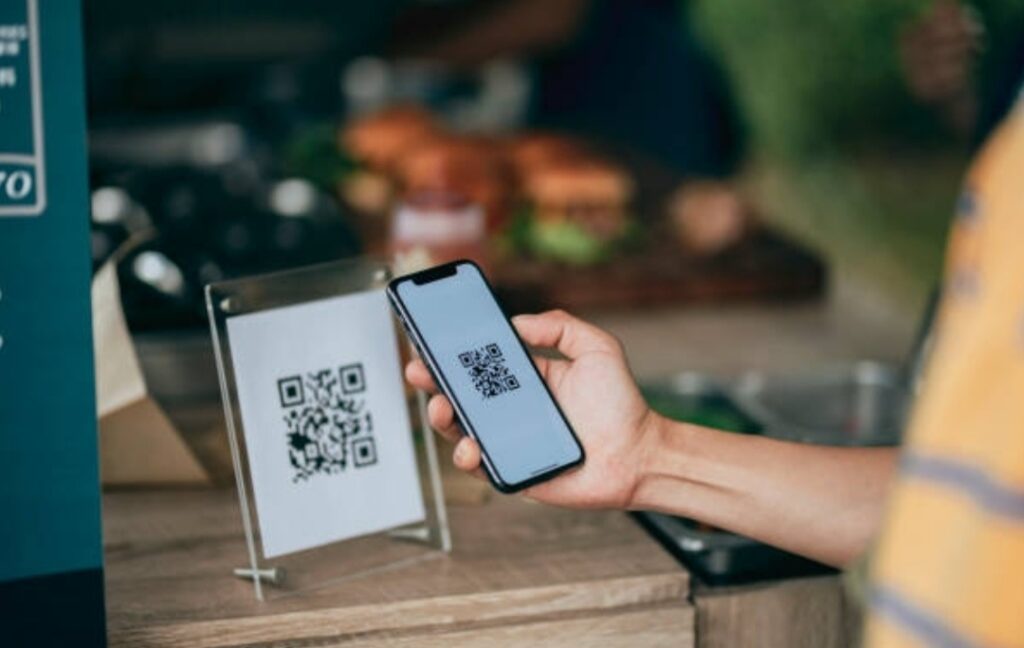
📌 What is a QR Code?
If you’ve ever scanned a square pattern with your phone to open a website, connect to Wi-Fi, or access a menu—then you’ve already used a QR code.
QR code stands for “Quick Response code.”
It’s a two-dimensional barcode that can store a wide range of digital information—like URLs, phone numbers, payment info, and even entire business cards.
Unlike traditional barcodes, which can only hold information horizontally, QR codes store data both horizontally and vertically, giving them the power to hold hundreds of times more information.
This makes QR codes extremely versatile, powerful, and perfect for today’s fast-paced digital world.
So, if you’re wondering what is a QR code, think of it as a smart shortcut—one that instantly connects you to digital content without the need for typing.
QR codes are read by scanning with a smartphone or QR reader, which then decodes the data and takes action—like opening a website or initiating a download.
Most modern smartphones now come with built-in QR scanners in their default camera apps, eliminating the need for third-party tools.
QR codes can hold up to 7,089 numeric characters or 4,296 alphanumeric characters, making them ideal for marketing, payments, logistics, healthcare, and more.
Whether it’s for scanning a boarding pass, checking into an event, or unlocking a digital coupon—QR codes are everywhere, and their ease-of-use is what makes them so popular.
✨ Did You Know?
A single QR code can store the equivalent of an entire paragraph of text or a full URL—even one with UTM parameters for tracking!
📜 The Origin of QR Codes
The QR code was invented in 1994 by Masahiro Hara, a Japanese engineer working at the company Denso Wave—a subsidiary of Toyota.
At the time, the goal was to create a code that could be scanned at high speed to track automotive parts during manufacturing.
Standard barcodes weren’t cutting it.
They were too limited in both space and scanning angle.
Hara and his team wanted something faster and more reliable—something that could be scanned from any angle and contain more data.
Thus, the QR code was born.
Interestingly, Denso Wave chose not to patent the QR code, allowing it to be used freely by companies worldwide.
This open-source decision played a huge role in the widespread adoption of QR codes today.
Over time, what began as a tool for logistics quickly evolved into an everyday utility that consumers and businesses alike have embraced globally.
💡 Pro Tip:
If you’re using QR codes for your business cards, email marketing campaigns, or event check-ins, you’re tapping into a tool originally designed for industrial efficiency. That’s some smart innovation!

🌍 Modern Usage and the Rise of QR Codes
The use of QR codes exploded globally during the COVID-19 pandemic, when contactless solutions became essential.
From restaurants and hospitals to schools and public transport—QR codes became the go-to solution for minimizing physical contact while maintaining digital access.
You’ve probably seen QR codes used in:
- Restaurants for digital menus.
- Retail stores for product info and special deals.
- Hospitals for accessing test results or check-in forms.
- Airports for boarding passes.
- Events for entry validation.
- Marketing campaigns that lead users to landing pages or promo offers.
Today, they are widely used in:
- Mobile payments (think Apple Pay, Google Pay, WeChat Pay).
- Authentication (2FA logins using QR).
- Product packaging (providing full ingredient and supply chain transparency).
- Education (linking to assignments, lectures, or resources).
- Crypto wallets (scanning addresses for transactions).
Modern QR codes have evolved.
They now support branding, can be customized in color, include logos, and even incorporate tracking analytics for marketers and business owners.
QR codes have become so embedded in our daily lives that, in some parts of the world (like China and India), they are now the primary method for making payments.
With the rise of digital wallets, NFC alternatives, and IoT integrations, QR codes have positioned themselves as a key pillar in the contactless economy.
Want to start using QR codes in your business today? Try creating your first one with this easy QR code generator! It’s free and beginner-friendly.
⚙️ Why Are QR Codes So Widely Used?
Let’s break down a few reasons:
- ✅ Fast and convenient — no typing or manual input.
- ✅ Free to create and easy to scan.
- ✅ Contactless and safe in the post-COVID era.
- ✅ Versatile — works for URLs, Wi-Fi credentials, app downloads, and more.
- ✅ Trackable — dynamic QR codes allow for user analytics.
- ✅ Accessible globally — used by both tech-savvy users and first-time smartphone owners.
🛠️ Tech Tip:
Always test your QR code on multiple devices before publishing. Poor contrast, bad placement, or resizing can affect its scanability.
🔑 Key Takeaways:
- What is a QR code? It’s a scannable, data-rich barcode that bridges the physical and digital worlds.
- Invented in 1994, QR codes have evolved far beyond their original use in manufacturing.
- The COVID-19 pandemic skyrocketed their use, bringing them into everyday life.
- From payments to promotions, QR codes are now essential tools for digital communication, commerce, and security.
🔍 How Do QR Codes Work?
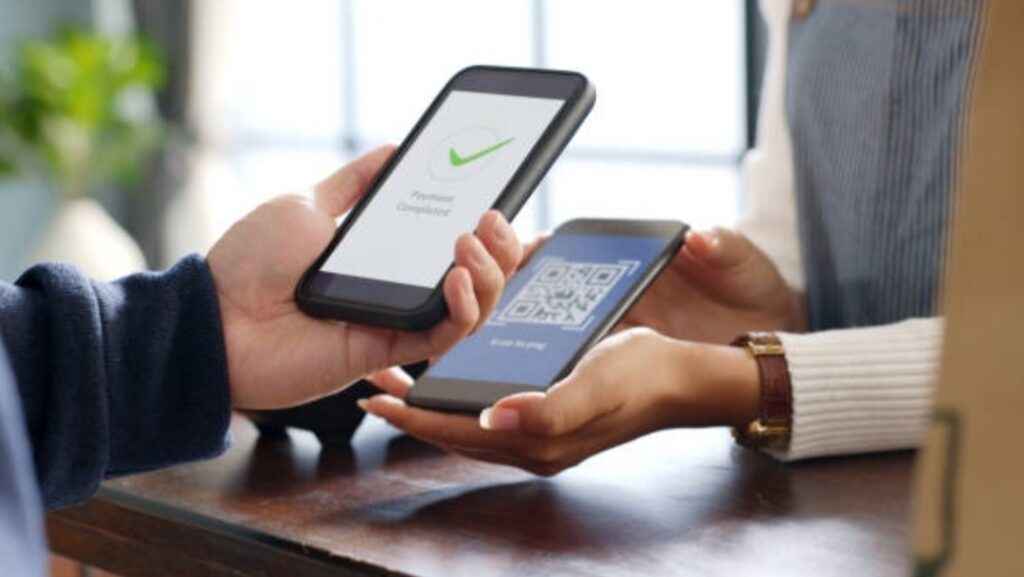
⚙️ The Technology Behind QR Codes
A QR code is made up of black squares arranged in a square grid on a white background.
These patterns encode data using binary (1s and 0s), which is then interpreted by a QR code scanner or your smartphone’s camera.
When scanned, the QR code’s pattern is analyzed and converted into digital information—such as a URL, contact info, or even payment instructions.
Each QR code includes:
- Finder Patterns – Large squares in 3 corners that help the scanner detect the orientation.
- Alignment Patterns – Ensure accuracy in scanning, even if the code is distorted.
- Timing Patterns – Help define the structure of the data grid.
- Data Area – Where the actual encoded information lives.
📷 Pro Tip: When using your smartphone’s camera to scan, make sure there’s enough light and the entire QR code is visible in the frame.
📊 What Kind of Data Can a QR Code Hold?
QR codes are incredibly versatile. Depending on the version and the amount of error correction applied, they can store:
| Data Type | Maximum Capacity |
| Numeric only | Up to 7,089 characters |
| Alphanumeric | Up to 4,296 characters |
| Binary (8-bit) | Up to 2,953 bytes |
| Kanji/Kana | Up to 1,817 characters |
Types of content a QR code can store:
- URLs (e.g., https://yourwebsite.com)
- Text messages
- Email addresses
- Phone numbers
- vCards (digital business cards)
- Event details
- Wi-Fi login info
- App store download links
- Payment requests (crypto or fiat)
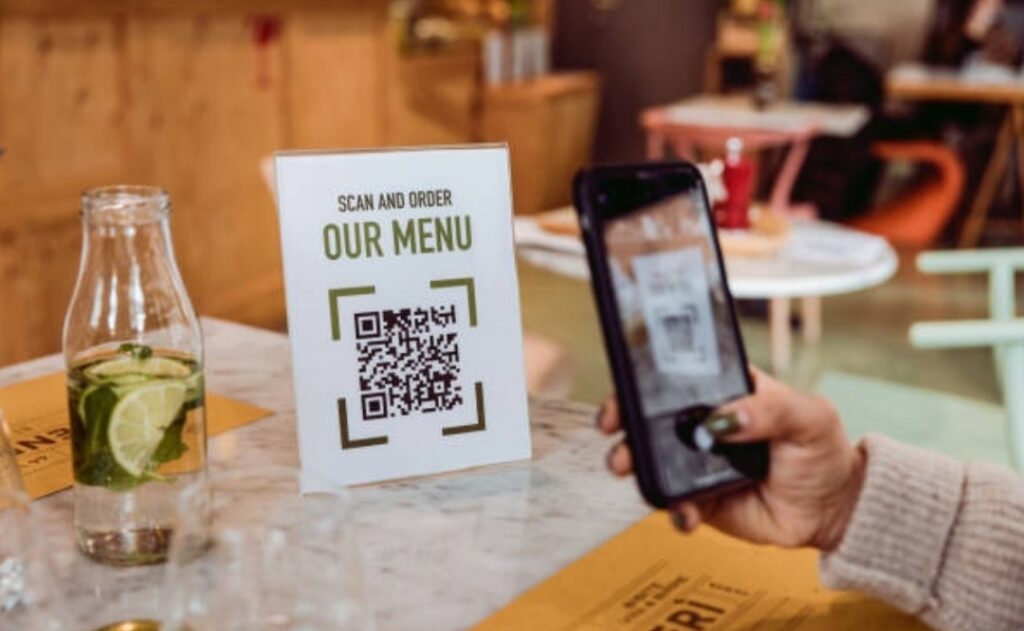
🔄 What Happens When You Scan a QR Code?
Here’s a simplified step-by-step breakdown:
- You open your camera or QR scanning app.
- The camera detects the QR code’s alignment patterns to recognize its position and structure.
- The app decodes the data matrix inside the QR code using error-correction algorithms.
- The content is displayed or action triggered—such as opening a URL, adding contact info, or joining a Wi-Fi network.
🔐 Bonus: Many modern QR code scanners include preview functionality, so you can see where a link will take you before you click—helping protect against scams.
🧠 Static vs. Dynamic QR Codes – How Do They Work Differently?
- Static QR Codes:
- Once created, the data cannot be edited.
- Ideal for one-time or unchanging info.
- Examples: personal contact info, plain text, or event dates.
- Once created, the data cannot be edited.
- Dynamic QR Codes:
- The destination can be updated without changing the code itself.
- Great for campaigns, business links, and situations where data needs to evolve.
- Trackable via analytics—letting you see who scanned, when, and where.
- The destination can be updated without changing the code itself.
💼 Use Case: If you’re a business owner, dynamic QR codes are perfect for marketing—you can change the destination URL any time without reprinting your posters or menus.
🧪 Bonus – What is QR Code Error Correction?
QR codes have built-in error correction using something called Reed-Solomon codes.
This means:
- Even if part of a QR code is damaged or dirty, it can still be scanned successfully.
- QR codes can tolerate up to 30% damage and still function.
There are 4 levels:
- L (Low) – 7% error correction
- M (Medium) – 15% (most common)
- Q (Quartile) – 25%
- H (High) – 30% (used for high-res branding)
🎯 This is why QR codes still work on wrinkled paper, receipts, or product packaging—even when the logo is embedded in the center!
✅ Key Takeaways:
- QR codes use a square pattern of black-and-white modules to store digital information.
- They can hold data like URLs, phone numbers, and payment requests.
- Static codes are fixed; dynamic codes can be updated and tracked.
- Error correction makes QR codes incredibly durable and reliable.
How do QR codes work?
QR codes work by storing digital information in a 2D grid of black and white squares. When scanned using a QR code reader or smartphone camera, the pattern is decoded to reveal text, links, or data, triggering a specific action—like opening a URL or displaying a message.
🔍 Types of QR Codes and Their Uses
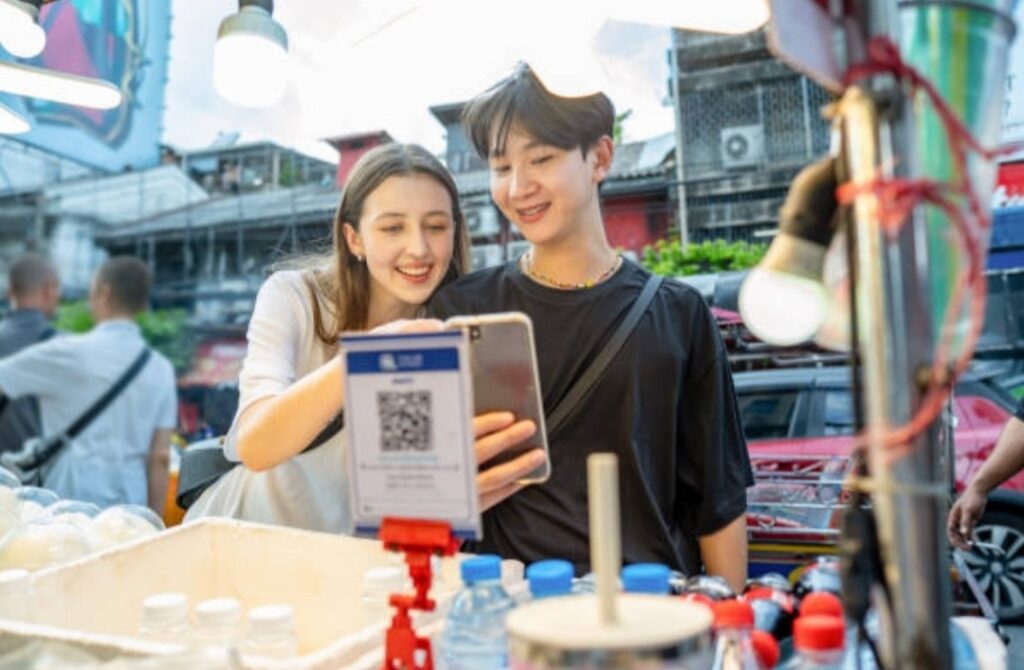
🧩 1. Static QR Codes
A static QR code is a fixed code—once it’s created, its content cannot be edited or changed.
Think of it as etched in stone.
These are ideal for:
- One-time campaigns
- Business cards
- Wi-Fi passwords
- Event invitations
- Download links
Because static codes are non-editable, they work best when the information won’t need future updates.
⚠️ Example: If you print a static QR code on 10,000 brochures and later change your website URL, the QR code will still point to the old one. No turning back.
Pros:
- Free to generate
- Doesn’t require any subscription
- Simple and reliable
Cons:
- Not trackable
- Not editable
- No analytics
🔁 2. Dynamic QR Codes
Dynamic QR codes are editable, flexible, and trackable.
They store a short URL that redirects to your actual content—meaning the link behind the code can be changed without altering the code itself.
Use cases:
- Marketing campaigns
- Affiliate links
- Product packaging
- A/B testing different landing pages
- Managing multiple campaigns with one printed asset
📊 Pro Marketer’s Tip: With dynamic codes, you can measure the number of scans, locations, devices, and time of scan—perfect for optimizing performance.
Pros:
- Editable anytime
- Trackable with real-time analytics
- Password protection and expiration settings
- Can be used across multiple platforms
Cons:
- Usually requires a paid plan or subscription
- Depends on a redirection server (if it goes down, the code breaks)
🖼️ 3. QR Code Variants by Content Type
Here are popular QR code formats based on what they store:
| QR Code Type | What It Does | Use Case |
| URL QR Code | Opens a website or landing page | Product promotions, blogs, affiliate links |
| vCard QR Code | Adds contact info to user’s phone | Business cards, networking events |
| Email QR Code | Opens user’s email client with prefilled text | Newsletter opt-ins, customer support |
| SMS QR Code | Sends a pre-written text message | Customer engagement, SMS campaigns |
| Wi-Fi QR Code | Connects user to a Wi-Fi network automatically | Cafés, airports, home networks |
| App Store QR Code | Opens app store to specific app page | App downloads (iOS and Android) |
| PDF QR Code | Directs users to download or view a PDF | Ebooks, whitepapers, flyers |
| Crypto QR Code | Enables crypto payments or wallet sharing | Bitcoin, Ethereum, or other crypto wallets |
| Event QR Code | Adds event details to calendar | Conference check-ins, online RSVP |
🧠 Bonus Tip: Want a code that updates your followers with your latest content? Create a social media QR code that links to your Linktree or Beacons page.
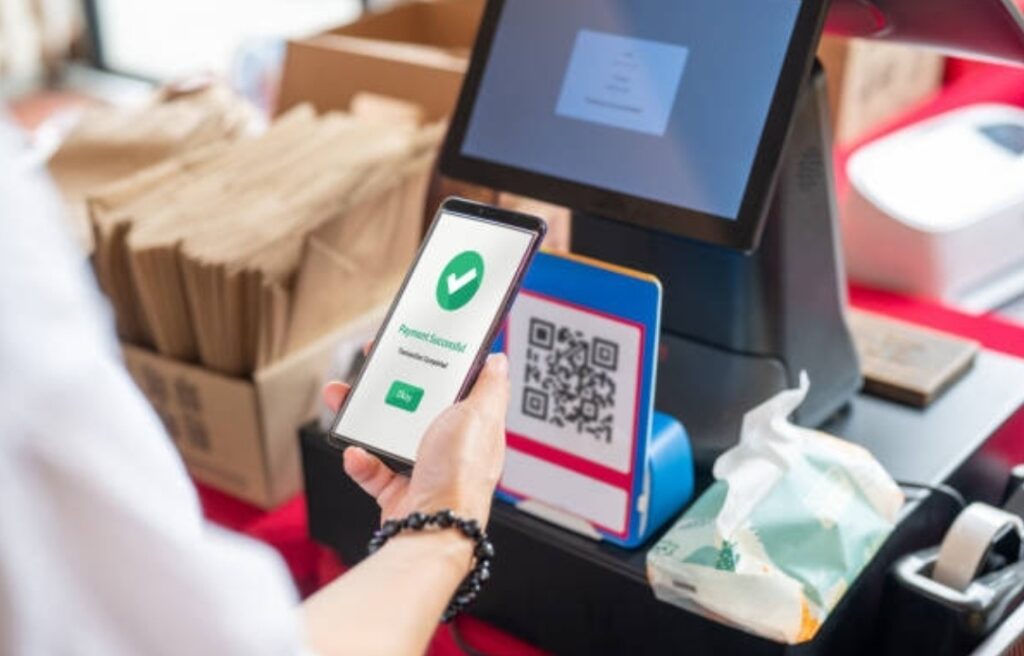
🎨 4. Customized / Branded QR Codes
In today’s design-driven world, plain black-and-white QR codes don’t always cut it.
That’s where custom QR codes come in.
These allow you to:
- Change the color scheme
- Embed your brand logo
- Add call-to-action (CTA) text
- Match your brand identity
- Use different shapes and frames
Branded QR codes increase scan rates by up to 30%, making them perfect for marketing and advertising.
✨ Tools like QR Code Monkey, Beaconstac, or Flowcode make it easy to create these visually appealing QR codes.
🔐 5. Secure & Encrypted QR Codes
Some industries—like banking, logistics, and healthcare—use secure QR codes with encryption and authentication mechanisms.
These include:
- Encrypted tokens
- OTP QR codes (for 2FA/MFA logins)
- Confidential document access
- Secure payment processing
They’re ideal for:
- Healthcare check-ins
- Event access with ticket validation
- Private document sharing
- Login authentication (used by apps like WhatsApp or Google Authenticator)
🔐 Security Tip: Never scan a QR code from an unknown source. Use preview tools or trusted scanners that show the destination URL first.
✅ Which Type of QR Code is Right for You?
- Use static QR codes for simple, one-time, or offline uses.
- Go with dynamic QR codes for marketing, tracking, and flexible links.
- Try branded/custom QR codes to boost engagement.
- Use secure QR codes when privacy and data protection are a priority.
What are the different types of QR codes?
The main types of QR codes are static (fixed, non-editable) and dynamic (editable, trackable). Other variants include QR codes for URLs, contact info, Wi-Fi, payments, app downloads, and encrypted data for secure usage.
⚖️ Pros and Cons of Using QR Codes

✅ Advantages of Using QR Codes
QR codes offer a wide range of benefits for both individuals and businesses:
- Convenient and Fast
Scan instantly—no typing or searching required. Perfect for mobile users. - Touchless Interaction
Essential for hygiene-conscious environments like hospitals or restaurants. - Highly Versatile
Can store URLs, text, files, contacts, event details, and more. - Cost-Effective
Free to create and easy to print on any material or digital platform. - Trackable Analytics (for dynamic QR codes)
Marketers and businesses can monitor scan activity: date, time, location, device type, etc. - Brandable and Customizable
You can add logos, choose colors, and design call-to-action frames to match your branding. - Offline to Online Bridge
Connect physical materials (flyers, signs, business cards) with online content in seconds.
Pro Tip: Use dynamic QR codes for flexibility—they let you edit the destination URL even after printing!
❌ Disadvantages and Limitations
Despite their strengths, QR codes do come with a few caveats:
- Requires a Smartphone with a Camera
Not all users have the latest devices or know how to scan properly. - Dependence on Internet Connection
Scanning often leads to an online action—useless without data or Wi-Fi. - Security Risks
Users may unknowingly scan malicious QR codes that lead to phishing sites or trigger harmful downloads. - Design Overload
Over-customizing can reduce scannability. Poor contrast, tiny size, or excessive logos can make the code unreadable. - Limited Engagement if Not Positioned Well
QR codes on moving vehicles, digital slides, or far-away signage may not be easily scanned. - User Reluctance or Mistrust
Some users may hesitate to scan QR codes due to privacy or scam concerns.
Real-World Note: A study found that over 60% of users hesitate to scan QR codes unless they’re sure it’s from a trusted source.
🧠 When Should You Not Use a QR Code?
- If your audience isn’t tech-savvy
- In environments with poor internet access
- On fast-moving media (e.g., TV ads without enough scan time)
- If you need long-form content—a QR code can only link, not display large amounts of info directly
✅ Quick Summary: Pros vs. Cons of QR Codes
| Pros | Cons |
| Fast, touchless interaction | Requires smartphone and internet |
| Free and easy to create | Can be a security risk if misused |
| Trackable with analytics | Poor design can affect scannability |
| Customizable with branding | Some users hesitate to scan |
| Bridges offline and online content | Not ideal in all settings |
What are the pros and cons of QR codes?
QR codes are fast, cost-effective, and versatile, allowing for easy touchless sharing of digital content. However, they can pose security risks, depend on smartphone access, and may discourage scans if poorly designed or mistrusted.
🌍 Where Are QR Codes Commonly Used Today?
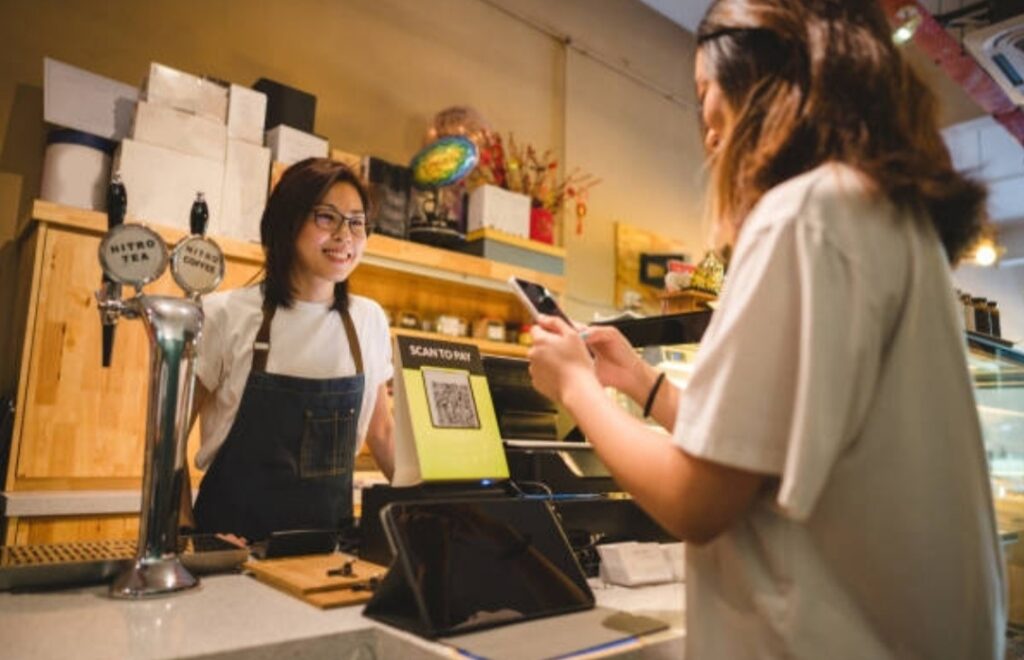
🏪 1. Retail and E-commerce
QR codes are widely used in retail settings for:
- Product information (e.g., specs, reviews, how-to guides)
- Discount coupons or promos
- Digital receipts
- Customer feedback forms
- Buy now/pay later options
🛒 Example: Clothing brands add QR codes to product tags so customers can view a sizing chart or see available stock online.
🍽️ 2. Restaurants and Cafés
Food businesses were among the first to go contactless during the pandemic—now QR codes are a standard.
Used for:
- Touchless menus
- Table ordering
- Bill payment
- Customer surveys
- Loyalty programs
Example: Starbucks uses QR codes for rewards scanning, and many restaurants use QR menus to reduce printing costs and limit physical contact.
🎓 3. Education and Training
In schools and professional development environments, QR codes enhance interactivity:
- Scan-to-access study materials or video lessons
- Attendance check-ins
- Homework submissions
- AR learning experiences
Tip: Teachers can stick a QR code on printed worksheets to link to an online quiz or YouTube explainer.
✈️ 4. Travel and Transportation
QR codes make travel more seamless and digital:
- Boarding passes and tickets (planes, trains, buses)
- Hotel check-ins
- Digital tour guides
- City maps and transit schedules
Airports like Heathrow and apps like Google Wallet rely heavily on QR codes for e-boarding and security checkpoints.
💼 5. Business Cards and Networking
Modern professionals are replacing printed business cards with QR codes linking to:
- vCard (contact download)
- LinkedIn profile
- Portfolio or resume
- Company website
Pro Tip: Create a branded QR code that links to a personal landing page with all your social/contact links.
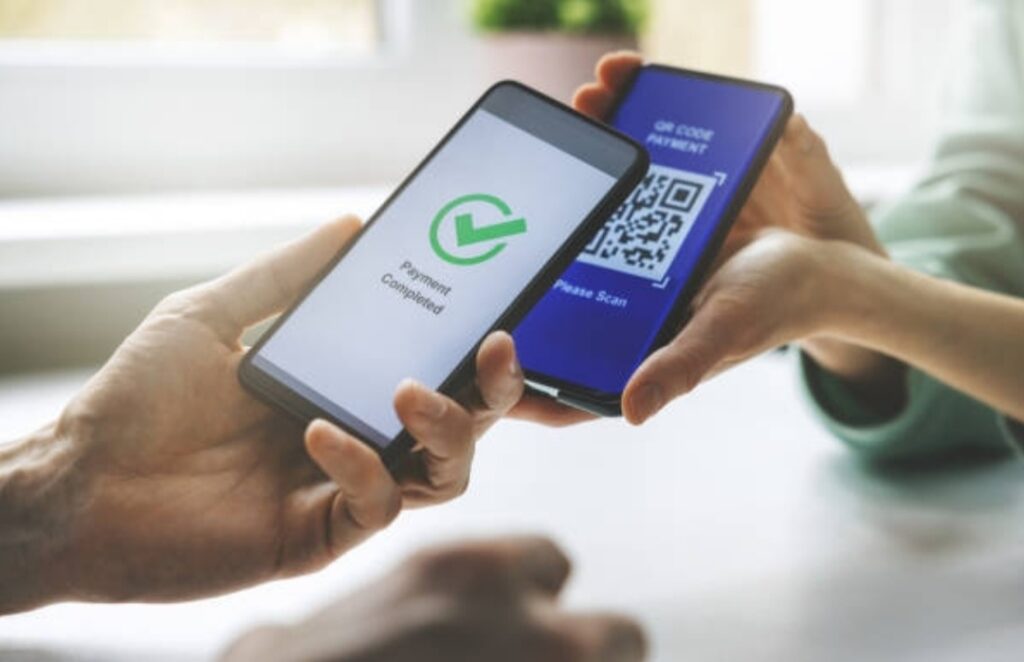
🎟️ 6. Events and Conferences
At events, QR codes save time and streamline logistics:
- Digital ticket scanning
- Booth info & lead collection
- Session check-ins
- Event schedules & maps
- Networking via LinkedIn or digital badges
Bonus: Use dynamic QR codes so you can update speaker slides or booth promotions on the fly.
💰 7. Payments and Banking
Fintech apps and traditional banks have adopted QR codes for secure, quick transactions:
- QR code payments (Venmo, PayPal, CashApp)
- Crypto wallet transfers
- Bank app login (e.g., scanning for authentication)
- POS systems in stores
In many Asian countries like China and India, QR codes are the dominant payment method.
🏥 8. Healthcare
Hospitals and clinics use QR codes to:
- Check in patients
- Access medical records or reports
- Share test results
- Verify prescriptions
- Track vaccinations
Example: COVID-19 vaccine certificates globally were often QR-based.
🎯 9. Marketing and Advertising
Marketers love QR codes because they’re trackable and highly interactive.
Use cases:
- Billboards, posters, flyers
- TV ads (scan while watching)
- Influencer marketing
- Email marketing (PDFs, videos, signup forms)
Dynamic QR codes allow A/B testing ad campaigns by swapping destinations without reprinting materials.
✅ Recap: Most Popular QR Code Applications
| Industry | Use Case |
| Retail | Product info, discounts, payment |
| Restaurants | Menus, orders, loyalty programs |
| Education | Lesson links, attendance, quizzes |
| Travel | E-tickets, hotel check-ins, maps |
| Business | Contact sharing, LinkedIn, portfolios |
| Events | Ticketing, booth info, live updates |
| Finance | QR payments, crypto, bank transfers |
| Healthcare | Records access, test results |
| Marketing | Ads, email campaigns, social linking |
Where are QR codes used today?
QR codes are used in retail, restaurants, education, travel, healthcare, payments, events, and marketing to share information, enable contactless services, and connect users to digital content efficiently.
🛠️ How to Create a QR Code (Step-by-Step Guide)
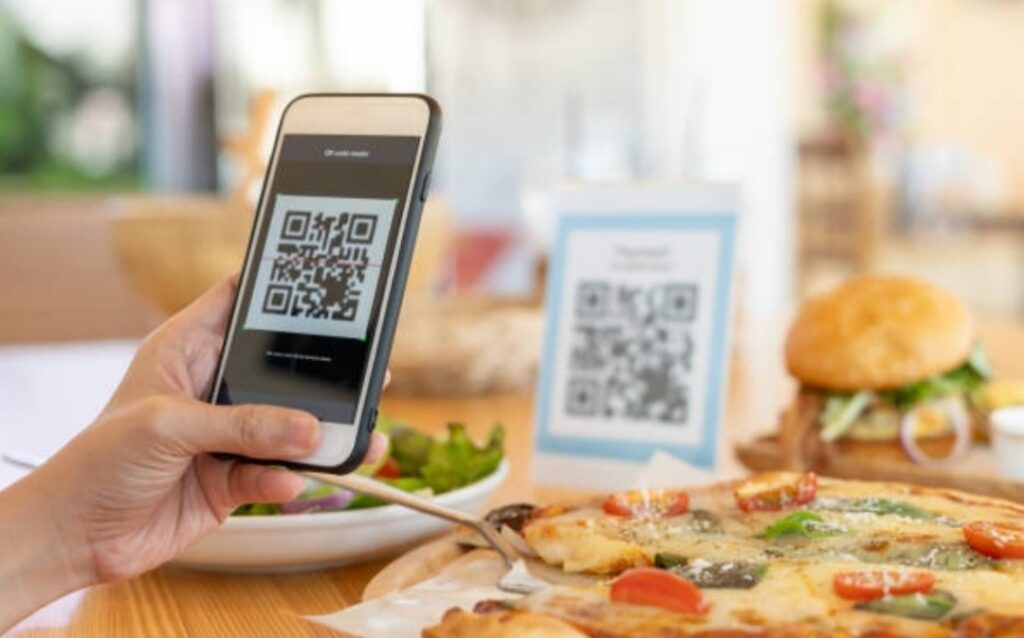
✏️ Step-by-Step: How to Make a QR Code in Under 2 Minutes
Here’s how to create a QR code quickly and easily—even if you’ve never done it before.
✅ Step 1: Choose What Your QR Code Will Link To
Decide what type of data you want your QR code to share. Common types include:
- A URL (website, blog, YouTube, etc.)
- Text message
- Phone number
- Email
- Wi-Fi login
- App download
- vCard (contact info)
- PDF file
- Social media link
Example: If you’re running a promo, use your landing page URL.
✅ Step 2: Select a QR Code Generator
There are dozens of online tools you can use. Here are some of the most trusted and beginner-friendly:
| QR Code Generator | Features | Free Plan |
| QR Code Monkey | Custom design, color, logo | Yes |
| Beaconstac | Dynamic QR, analytics | Yes |
| QRStuff | 20+ code types | Yes |
| GoQR | Plain-text QR codes | Yes |
| Canva | Built-in design + QR tool | Yes |
⚙️ Pro Tip: Choose a generator that offers dynamic QR codes if you want future editing or scan tracking.
✅ Step 3: Enter Your Content
- Paste your URL, text, or email into the form.
- Choose static or dynamic (if available).
- Some tools allow color changes or logo uploads for branding.
✅ Step 4: Customize Your QR Code (Optional)
Make your QR code match your brand:
- Add your logo in the center
- Change foreground/background color
- Pick a frame style with a call-to-action (like “Scan Me”)
🎨 Custom QR codes increase scan rates by making them visually appealing and trustworthy.
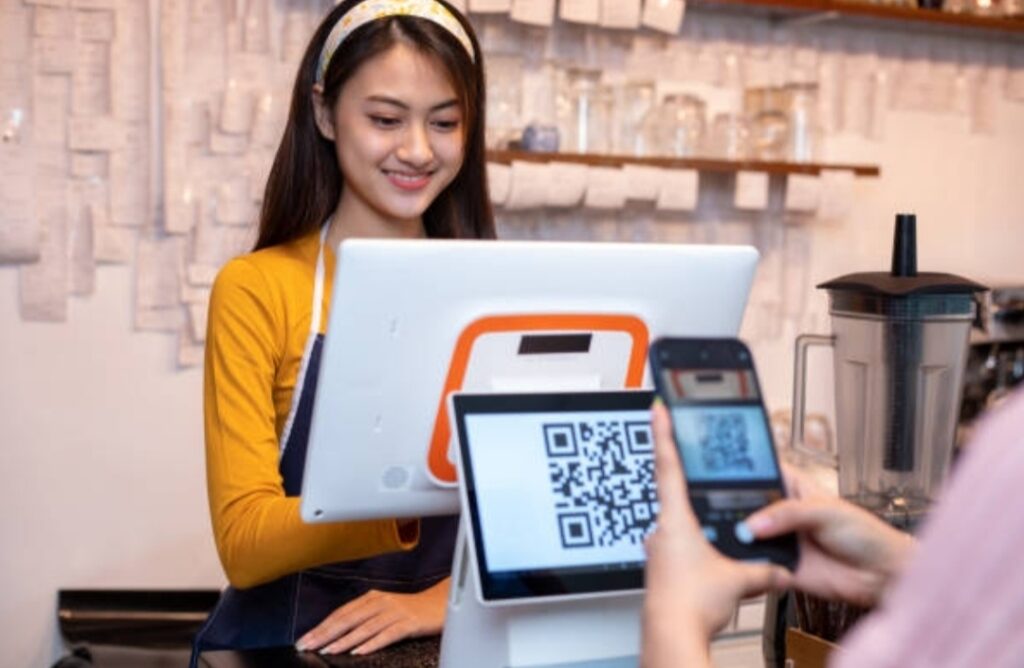
✅ Step 5: Download and Test Your QR Code
- Click “Download” in PNG, SVG, or PDF format.
- Test it with at least two phones or scanning apps to make sure it works.
- If dynamic, check if analytics are working.
🧠 Bonus – How to Create QR Codes in Canva
Canva’s built-in QR tool lets you insert QR codes right into your designs:
- Open any design (poster, flyer, business card).
- Go to Apps > QR Code in the left panel.
- Paste in your URL.
- Click Generate QR Code.
- Resize or reposition it in your design.
Perfect for adding QR codes to printables or social media content.
📱 Mobile Apps for QR Code Creation
Need to generate QR codes from your phone? These apps are excellent:
- QR Code Generator (by LogiLink) – iOS, Android
- QRbot – iOS, Android
- Scanova – For business-grade dynamic codes
- Canva App – QR code tool included in mobile version
✅ Quick Recap: How to Make a QR Code
- Decide what you want your QR code to link to.
- Choose a trusted QR code generator.
- Paste your content and choose static or dynamic.
- Customize with brand colors or logos.
- Download, test, and deploy it on your desired platform.
How to create a QR code?
To create a QR code, choose a QR generator like QR Code Monkey or Beaconstac, enter your content (such as a URL or contact info), customize the design if needed, and download the code. Always test the QR code before using it publicly.
⚠️ Real-World QR Code Scams

❗ How Scammers Use QR Codes
QR codes don’t reveal their content until they’re scanned, which gives cybercriminals the perfect tool for tricking users. Here’s how:
1. Phishing via Fake Websites
Scammers replace legitimate QR codes (on posters, menus, or ads) with malicious ones that redirect to fake login pages. Victims unknowingly enter their banking, PayPal, or email credentials.
Example: A user scans a QR code at a parking meter thinking it leads to a payment page, but it actually redirects to a cloned website that steals their card details.
2. Malware Downloads
Some QR codes, especially those on stickers in public places, lead users to infected apps or files that can:
- Steal data
- Track your location
- Control your device remotely
This tactic is often used on Android phones via APK files.
3. QR Code Email Scams (Quishing)
“Quishing” is a rising email scam where the message contains a QR code instead of a clickable link, bypassing email security filters.
Users scan the QR code on their phone, thinking it’s legit, but are redirected to phishing sites.
4. Fake QR Codes on Parking Meters & ATMs
Some scammers physically cover real QR codes (like those for paying for parking) with their own printed version. Once scanned, victims are taken to a payment form controlled by the attacker.
This scam hit several major U.S. cities in 2023, including Austin and San Antonio.
5. Crypto Wallet Theft
QR codes are popular in crypto, but scammers exploit this by:
- Creating wallet address QR codes that look legitimate
- Victims send funds to the wrong wallet thinking it’s their own or a friend’s
One scan and the funds are irreversible.
⚠️ Signs of a Suspicious QR Code
Be cautious if:
- It’s a loose sticker (especially in public areas)
- You’re asked to log in after scanning
- It requests personal or financial info
- The code leads to a URL shortener (like bit.ly or tinyurl)
- The brand or context doesn’t match the landing page
✅ Quick Tip: Always preview the link after scanning before clicking. Most phones let you see the URL first—don’t click if it looks off or unfamiliar.
Can QR codes be used in scams?
Yes. QR codes can be exploited for scams by redirecting users to fake websites, downloading malware, or tricking them into sending money. Always verify the source before scanning and never enter sensitive info after scanning a random QR code.
✅ How to Use QR Codes Safely (Tips & Best Practices)
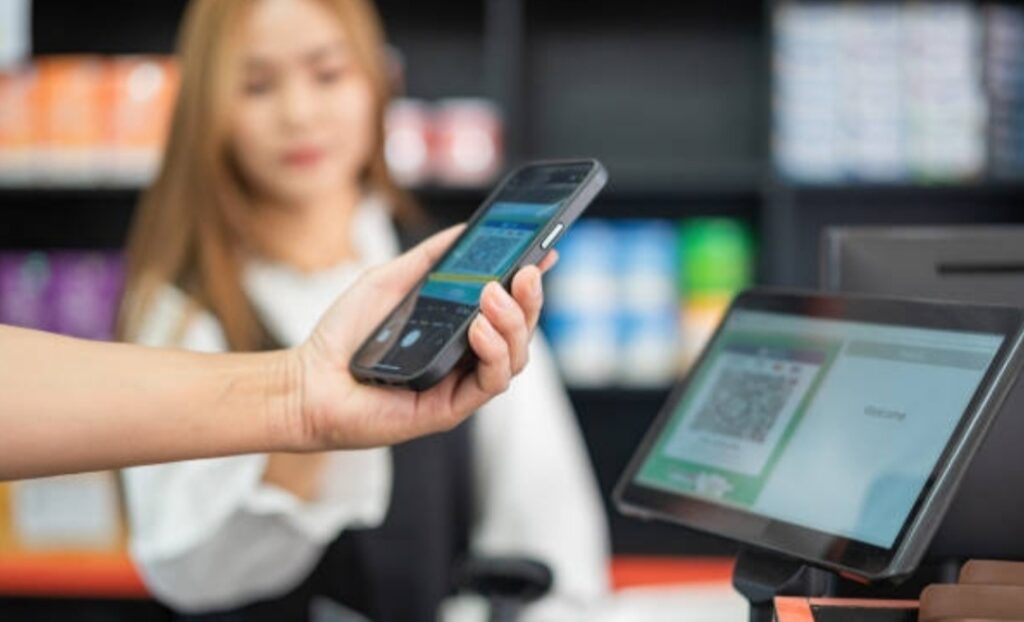
🔐 Safety Tips for Scanning QR Codes
Follow these best practices to avoid falling victim to scams or malicious content:
1. Always Check the URL Preview
When you scan a QR code, your phone typically shows a preview of the link before opening it. Look for:
- Secure URLs that start with “https://”
- Recognizable domain names
- No strange symbols or misspellings
If the preview link looks odd—don’t click it.
2. Don’t Scan Random QR Stickers in Public
Be cautious about codes posted on telephone poles, public bathrooms, subway ads, or parking meters—especially if they look like they’ve been stuck over another code.
3. Avoid Shortened URLs in QR Codes
Codes that lead to bit.ly, tinyurl, or unknown URL shorteners can mask the real destination. These are often used in phishing and malware attacks.
4. Never Enter Sensitive Info After Scanning
A QR code should never ask for your bank login, credit card details, passwords, or security codes. If it does, it’s a scam.
5. Use a Reputable QR Scanner App
While modern smartphones have built-in scanners, some third-party apps provide extra safety features like:
- URL checks
- Malware warnings
- Blocking suspicious redirects
Recommended apps: Norton Snap QR Reader, Kaspersky QR Scanner, or Trend Micro QR Scanner
6. Check for Tampering or Replacements
In restaurants, stores, or public signage, inspect the code physically. If it looks like a sticker that was placed over something else, ask a staff member before scanning.
7. Update Your Device Software
Always keep your phone’s OS and security patches updated. This protects you against malicious QR behaviors like automatic downloads or app installations.
How can I use QR codes safely?
To use QR codes safely, check the URL preview before clicking, avoid scanning random public codes, never enter sensitive info after scanning, and use a secure QR scanner app. Also, stay alert for signs of tampering and keep your phone updated.
🔐 Are QR Codes Safe to Use?
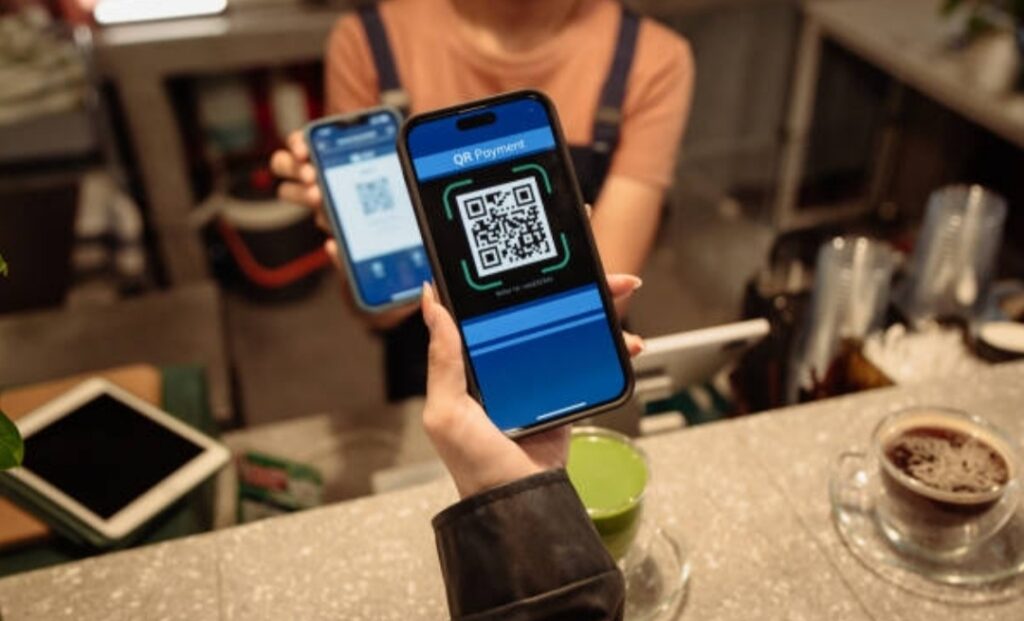
⚠️ The Short Answer — Yes, But With Caution
QR codes are generally safe, but like any technology, they can be misused by cybercriminals to trick users into visiting malicious websites, downloading malware, or sharing personal information.
The QR code itself is not dangerous, but the content it leads to can be.
🔍 Quick Fact: A QR code is just a carrier of data. It doesn’t do anything unless you scan it and act on what it reveals.
🧨 Common QR Code Security Risks
Here are the main dangers to be aware of:
- Phishing Attacks
Scammers use QR codes to direct users to fake websites that look legitimate, tricking them into entering login credentials or personal data. - Malware Downloads
Some QR codes can prompt users to download apps or files that contain viruses, spyware, or ransomware. - QR Code Jacking (Quishing)
Attackers place malicious QR code stickers over legitimate ones—like on restaurant tables, parking meters, or posters—redirecting people to harmful sites. - Fake Payment Portals
Criminals use QR codes to mimic payment interfaces (PayPal, crypto wallets, etc.) to steal money or sensitive financial data. - Location Tracking or SMS Exploits
Some codes can trigger SMS messages or reveal your IP/location info to third parties without your consent.
🚨 Real-World Example: In 2023, scammers were caught placing fake QR codes on parking meters in major cities, directing users to phishing sites that stole their payment info.
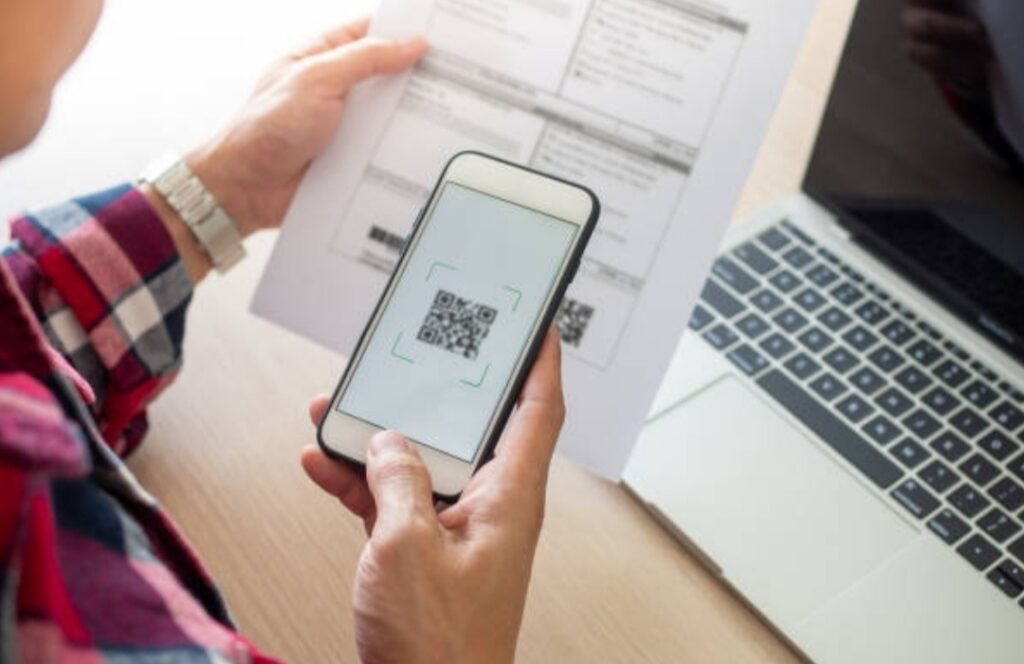
🧯 How to Stay Safe When Using QR Codes
Use these best practices to protect yourself:
| Tip | What to Do |
| 1. Preview the URL | Use QR scanners that display the link before opening it. Double-check for misspellings or suspicious domains. |
| 2. Avoid Random Codes | Don’t scan QR codes from flyers, emails, or ads that you don’t trust. |
| 3. Look for Tampering | Check for stickers or overlays on public QR codes—it could be a scam. |
| 4. Use Built-in QR Tools | Stick to native camera apps or reputable scanning apps with built-in security features. |
| 5. Watch for Unusual Actions | Be cautious if a QR code triggers an app install, file download, or asks for sensitive data. |
✅ Safe Scanning Apps You Can Trust
Some popular and secure QR code scanners include:
- Google Lens (built into Android)
- Apple Camera App (iOS 11+)
- Kaspersky QR Scanner
- Norton Snap
- Trend Micro QR Scanner
These apps typically include link preview and malicious site detection.
🔐 Bonus – Are QR Code Payments Secure?
QR codes are often used for payments—especially in restaurants, e-commerce, and crypto transactions.
As long as you:
- Verify the URL,
- Use a trusted app (PayPal, CashApp, etc.), and
- Avoid public Wi-Fi during payment,
QR code transactions are safe and encrypted.
⚠️ Just be sure the QR code hasn’t been swapped by someone else—especially on printed materials or public touchpoints.
✅ Final Thoughts: Are QR Codes Safe?
Yes—QR codes are fundamentally safe if used correctly and scanned from trusted sources. Like with email links or popups, the real risk comes from what you click next, not the code itself.
Are QR codes safe to use?
Yes, QR codes are safe as long as they are scanned from trusted sources. However, they can be misused for phishing or malware attacks, so always preview the URL and avoid scanning unknown codes.
🚀 The Future of QR Codes
As digital convenience continues to evolve, QR codes are no longer just a trend—they’re becoming a foundational part of modern technology. From retail and restaurants to healthcare and blockchain, their role is rapidly expanding.
So, what’s next for QR codes?
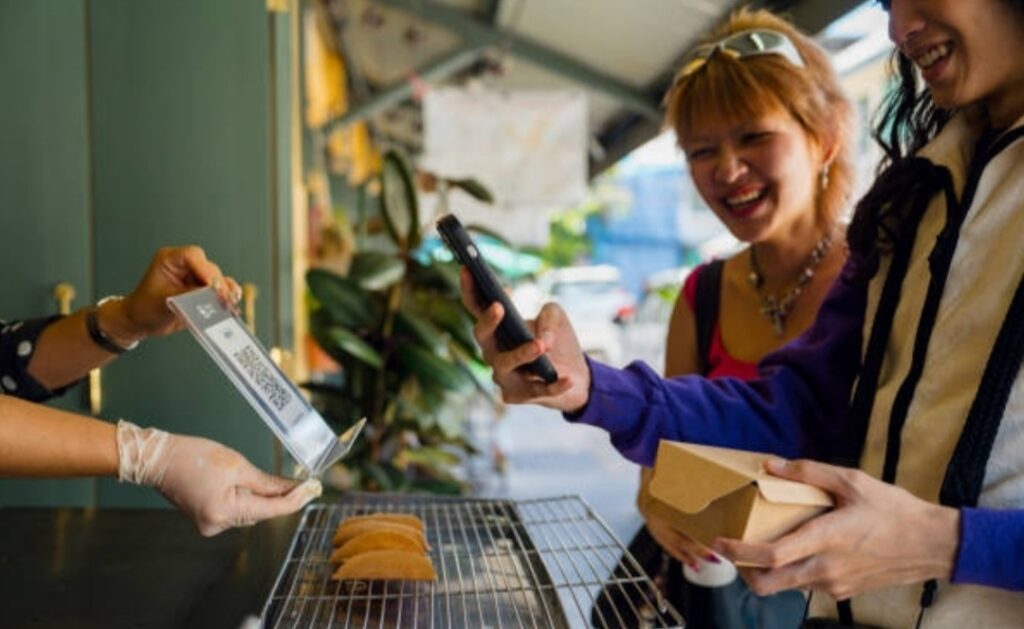
🔮 Evolving From Static Tools to Smart Experiences
While QR codes started as static links, the future lies in intelligent, dynamic, and interactive QR technology. With integrations across AI, IoT, and 5G, QR codes are expected to offer:
- Personalized content based on user behavior or location
- Real-time updates from dynamic URLs
- Context-aware actions, like app switching, smart contracts, and cross-device syncing
🌐 Integration With Augmented Reality (AR) & Wearables
As AR and wearables grow, QR codes will become more than just 2D graphics. Expect:
- QR codes that trigger AR overlays for immersive shopping or training
- Integration with smart glasses, watches, and virtual interfaces
- Gesture-based scanning and voice-activated interactions
Imagine pointing your smart glasses at a QR code and instantly seeing a 3D product demo or hologram.
💳 Payment, Identity & Blockchain Applications
In many parts of the world, QR codes have already replaced traditional credit cards. But future applications include:
- Biometric-linked QR IDs for airport security, events, or health records
- Crypto wallet interactions (e.g., sending/receiving payments, NFTs)
- Encrypted QR codes for secure transactions and authentication
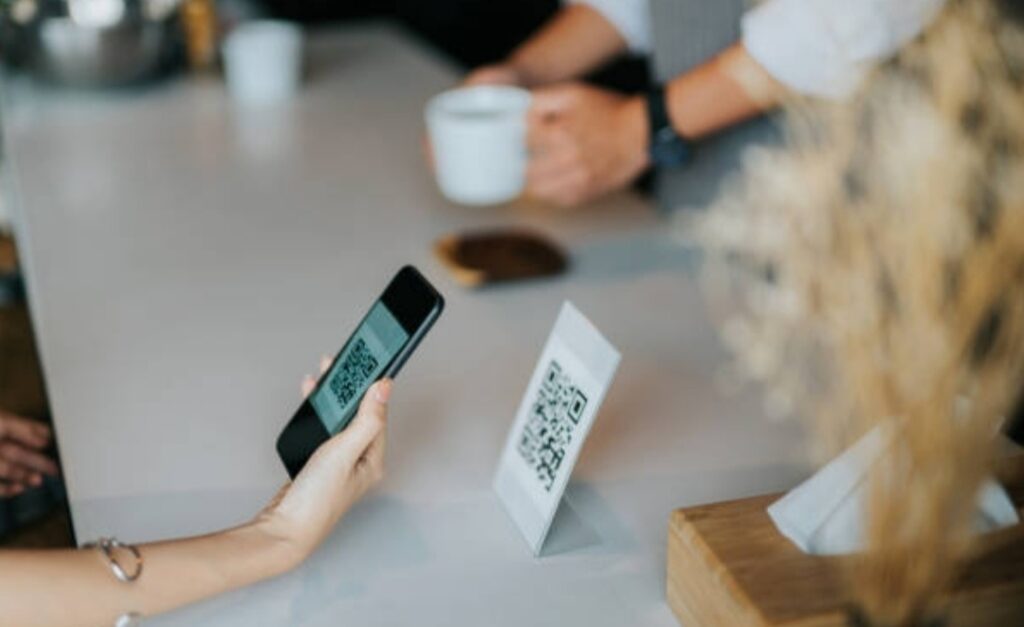
📈 Increased Adoption Across Industries
We’re likely to see deeper adoption of QR code tech in:
- Healthcare: Patient check-ins, prescriptions, vaccination tracking
- Education: Interactive learning materials, attendance, and testing
- Supply chain & logistics: Real-time tracking, traceability, and quality assurance
- Smart cities: Parking, public transport, utility bills, and citizen services
What is the future of QR codes?
The future of QR codes includes smart, interactive, and AI-driven features. They will power secure payments, personalized content, augmented reality, wearable integration, and be widely used in healthcare, education, and smart cities.
✅ Conclusion — What Is a QR Code and Why It Matters Today
QR codes are more than just black-and-white squares—they’re a modern gateway to instant digital interaction.
Whether you’re scanning to pay, view a menu, download an app, or attend an event, QR codes offer speed, convenience, and versatility in a contactless world.
But as we’ve explored, it’s essential to stay alert to potential scams and learn how to use them wisely.
From business marketing to personal use, the possibilities are nearly endless—and the future of QR codes is only getting smarter.
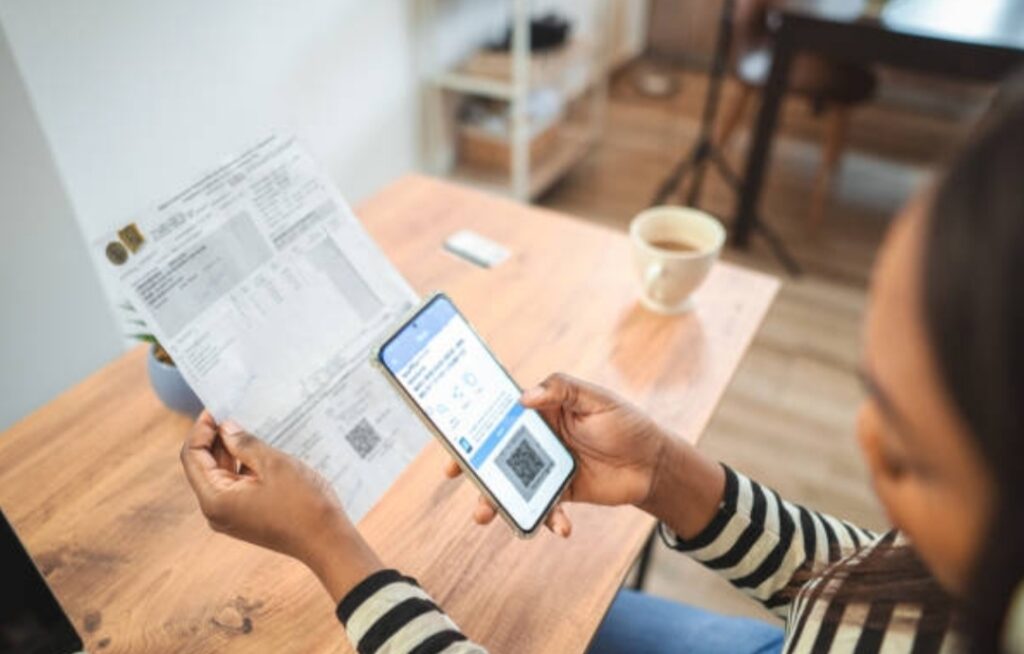
Final Tip: Always verify where a QR code leads before engaging, and stick to trusted sources when generating or scanning them.
🔁 Key Takeaways
- What is a QR code? A digital barcode that connects the physical and online worlds instantly.
- Are QR codes safe? Yes—when used responsibly and verified before scanning.
- How can you stay protected? Use QR scanning best practices, avoid suspicious codes, and educate others.
- What’s next? AI-enhanced, interactive, and customizable QR code technology for marketing, payments, and more.
💬 Got Questions About QR Codes?
Drop them in the comments or reach out—we’re happy to help! And if you found this post helpful, don’t forget to share it with others who might benefit from learning how QR codes really work.

